See through Lego with CT scan, what's going on inside?

The plastic assembly block '
Scan of the Month
https://www.scan0047month.com/
Two types of CT scans were made: a male firefighter included in the LEGO City series 'Fire Dangerous Goods Handling Vehicle ' and an alien included in the 'Earth Defense Headquarters ' of the Alien Conquest series. Firefighters are below.

The claw-shaped hand is 1 mm thick, but the arm itself is 2 mm thick. The inside of the arm is a cavity with a diameter of 0.6 mm.
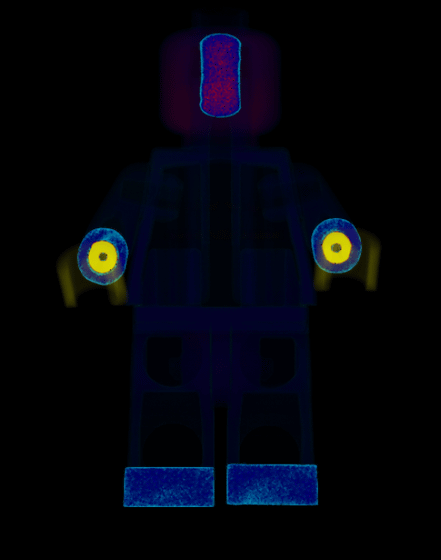
The outside has a smooth shape, but the inside of the fuselage hides a draft that

CT scans not only show through the internal structure, but also provide information about the material of the substance. When a firefighter's fire vest with a reflector is viewed by CT scan, it is displayed as a layer separate from the body, so it is thick, and due to the color change that occurs in the vest, different paints are used for each place. You can see that there is.
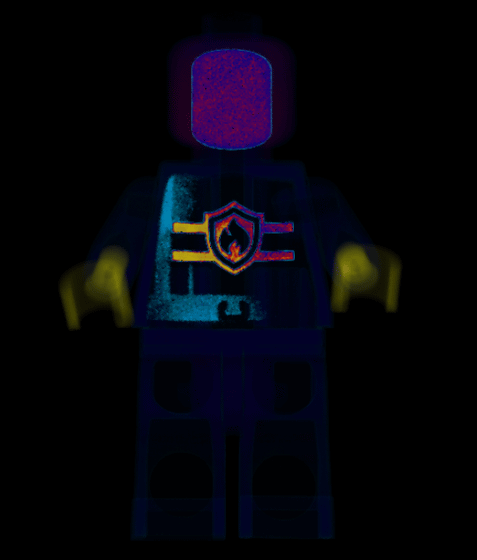
Next is the angle seen from above. There is a hole in the center of the neck, and there is a remnant of the 'gate' that was the entrance for the resin to be poured during injection molding. In this firefighter, the logo 'LEGO' is engraved in the center of the neck, and the letters L and O are not broken by the gate.
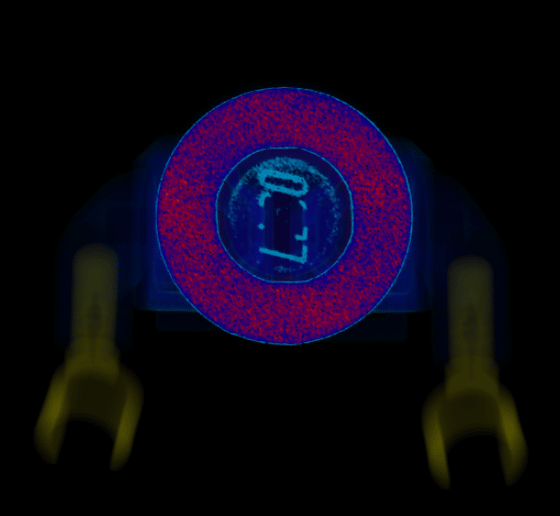
The torso has a consistent shape, but the legs vary greatly in shape depending on the position and are designed to withstand pressure.
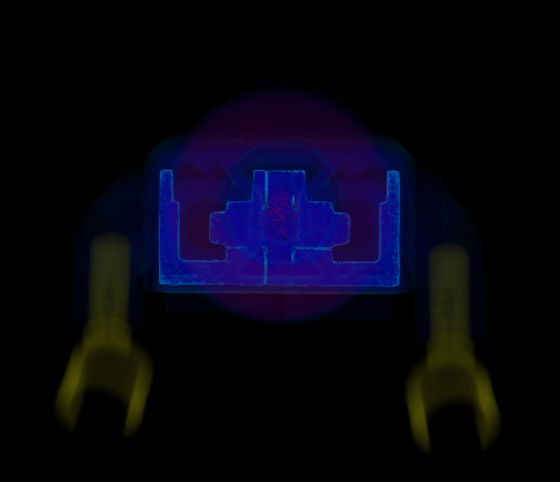
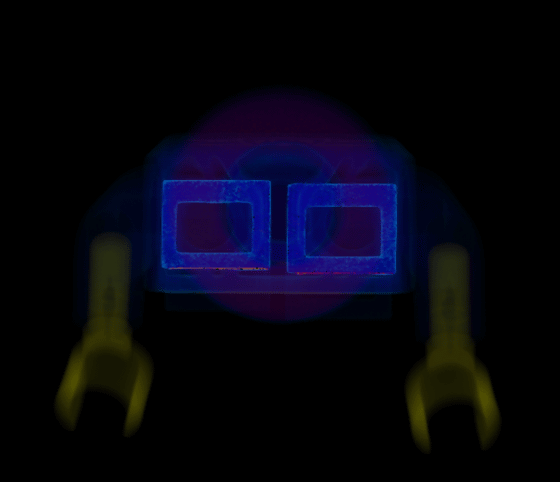
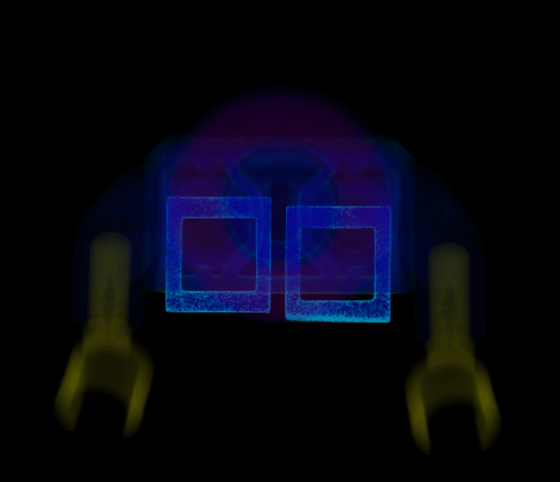
Next, we will look at the aliens with a CT scan.

The characteristic of aliens is that they have a bent wand. Like the arm, this wand has a hollow inside, and since the wand itself is circular, stress concentrates on the surface side instead of the inside when bent.
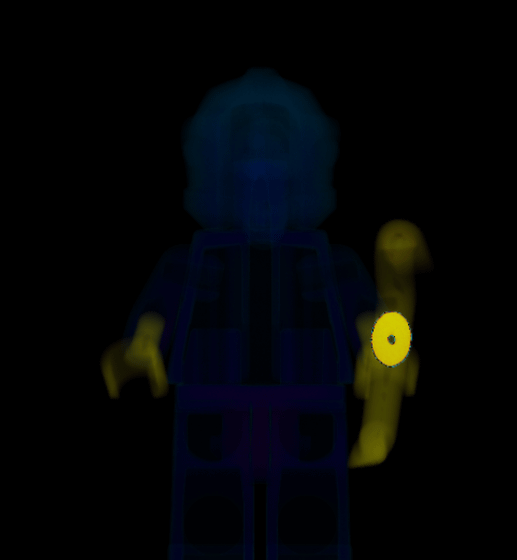
The legs are engraved with 'R' and 'L' identification marks. These identifiers are only 0.2mm high, but they are clearly visible on CT scans.
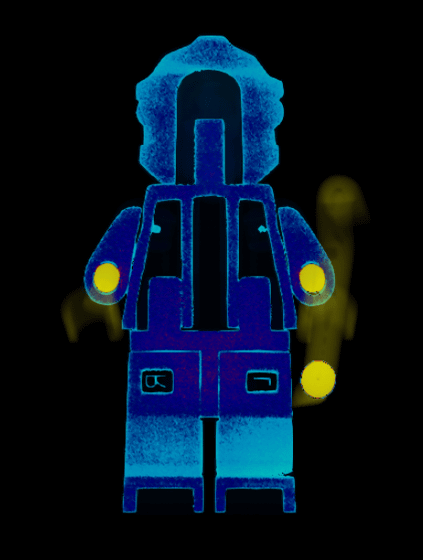
The cross section seen from the side is as follows. The joint between the torso and legs has a deviation of 0.05 mm or less.
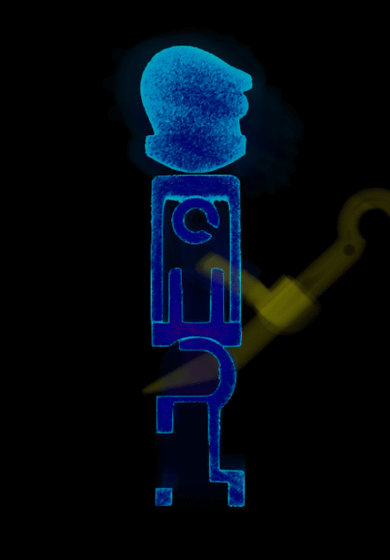
You can see from the small deviation that it is molded with considerable accuracy, but the design does not rely on dimensional accuracy. In the case of the alien arm,
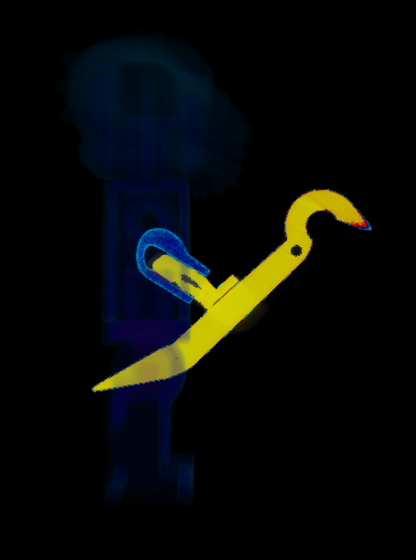
Related Posts:
in Design, Posted by darkhorse_log







